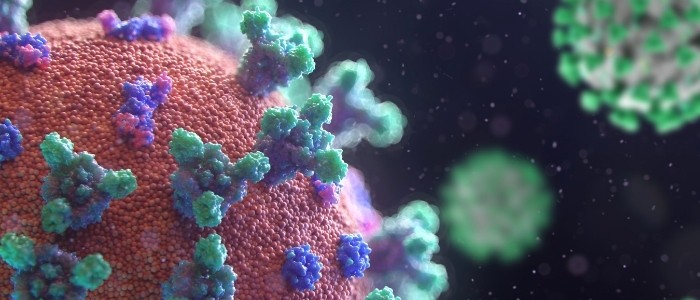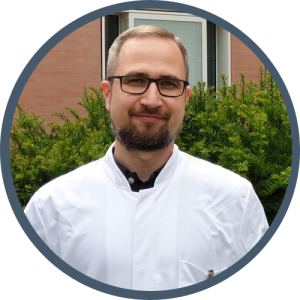Q&A: Novel cell models for rapid screening in SARS-CoV-2 infection studies


Marek Widera

Alexander Wilhelm
Couldn’t make the live Q&A for our webinar on novel cell models for rapid screening in SARS-CoV-2 infection studies, or didn’t get your questions answered?
Here we present your questions to the expert presenters from the webinar so that nothing is missed. Get the responses from Marek Widera (left) and Alexander Wilhelm (right) (both Goethe-University Frankfurt, Germany) below!
Concerning SARS-CoV-2 variants (e.g. Delta), is there a difference in CPE formation between the variants and do variants have an impact on automatic readout?
During the last year, we were faced with several interesting and concerning SARS-CoV-2 variants, which we obtained from patient samples directly or indirectly associated with traveling to the international airport in Frankfurt (Widera, Mühlemann et al. 2021). In our institute, a lot of these samples were subjected to viral outgrowth assays and allowed the culturing of high titer infectious stocks. These stocks were then analyzed for their ability to infect various cell types from different tissues with sometimes surprising results. Also interesting was, that by simple microscopic analysis, we already observed a distinct CPE regarding cell shape, syncytia size and the timely onset of syncytia and CPE induction. In particular, Beta and Zeta both harboring E484K mutation (Widera, Wilhelm et al. 2021a) showed huge and early syncytia. Surprisingly, Alpha was able to efficiently infect low ACE2-expressing cells, which was in accordance with previous manuscripts showing a higher affinity to ACE2. However, the onset of CPE was in comparison rather late (Widera, Wilhelm et al. 2021b). Each of the tested variants have distinct amino acid substitutions, in sum defining their characteristics, including the CPE morphology.
For the automatic readout, we had to consider these differences, which were also mirrored for example in the loss of fluorescence intensity. In addition, the time point of analyzing the cells was essential, since some variants as Alpha had a later CPE onset. Of note, all of these interesting findings were mainly observed using the A549-AT cells, which worked particularly well using reproducible automatic readout assays.
Automated measurement: How long does it take to measure a plate with the optimal settings?
This depends on the readout method and of course the format and size of the well (96 well or 6-well). Bright-field imaging (confluency and roughness) requires 6 min per 96 well-plate while fluorescence intensity measurements are faster and need less than 1 min per 96-well plate. The most sensitive readout is based on fluorescence microscopy (red object count) using the 10x objective, which needs 10 min per well of a 96-well plate.
Regarding environment control: Do gas concentration and temperature play a role in measuring virus replication?
For endpoint measurements, there is no need for environmental control. We did not observe any issues when measuring the plates within an hour, however, using longer measuring times the cells might lose viability. Hence, for long-term experiments or kinetics, we recommend using environmental controls to maintain optimal cell culture conditions. This is also highly important for standard procedures to yield reproducible results.
How fast are red count and fluorescent microscopy techniques? How many viruses can you detect in 10 minutes?
This depends on the readout method and of course the size of the well (96 well or 6-well). Bright-field imaging (confluency and roughness) requires 6 min per 96 well-plate while fluorescence intensity measurements are faster and need less than 1 min per 96-well plate. The most sensitive readout is based on fluorescence microscopy (red object count) using the 10x objective, which needs 10 min per well of a 96-well plate.
Could you please comment on where ACE2 is localized in your A549-AT cells, i.e. is it present at the cell surface?
During the generation of ACE2 overexpressing A549 cells, we always monitored the expression via FACS analysis. Since we did not permeabilize the cells in advance, we can conclude that a significant amount of ACE2 is appropriately located at the cell surface.
Are you able to quantify syncytia formation?
Syncytia are formed quite rapidly by the fusion of susceptible cells, which also express the viral spike proteins on their surface due to infection. Similar to viral entry, the cell membranes fuse together, resulting in multinucleated giant cells (syncytia). The beginning can be observed quite early and is actually quantifiable using the methods mentioned in the webinar, particularly roughness.
Why do you choose the adenocarcinoma cells of colorectal tissue, if it is possible to use feces to detect COVID?
Caco2 cells, which are adenocarcinoma cells of colorectal tissue, express high levels of ACE2 and TMPRSS2 making them susceptible to SARS-CoV-2. These cells were differentiated by serial passaging and selected for even higher permissiveness to virus infection. We have not yet tried to isolate replication-competent SARS-CoV-2 from feces. However, depending on which starting material is added to the cells, toxicity and bacterial or mycotic contamination must be considered.
Can you comment about interaction with the flu virus? Can rapid screening of SARS -CoV-2 recognize the difference between the two viruses?
A549 cells are susceptible to Influenza and show CPE formation. Therefore, it is possible to monitor an Influenza A or B infection with the bright field microscopic parameters confluency and roughness, as well as the loss of cells by red object count and fluorescence intensity measurement. We have not yet tested whether the CPE values can be used to clearly identify a virus, but this is something that we will certainly investigate in the future.
You can catch up on the full webinar on demand here!
